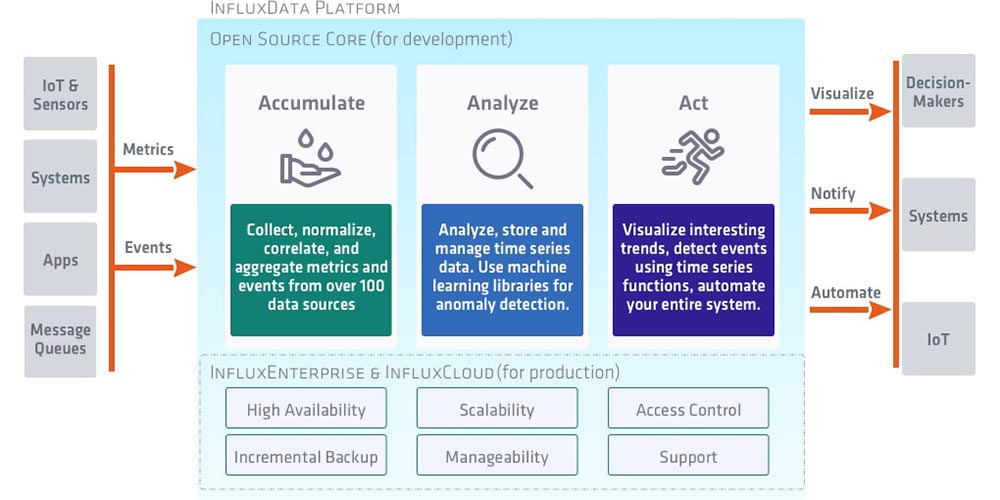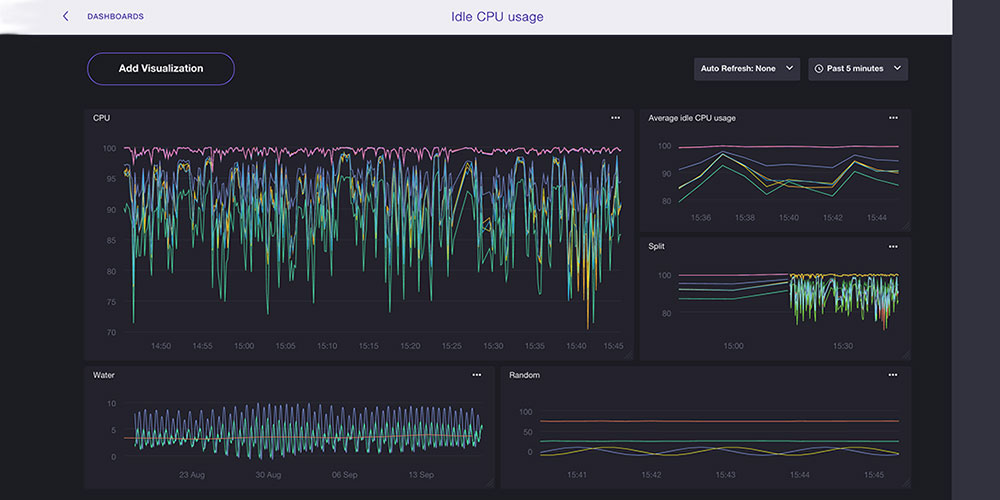InfluxData was started by Paul Dix in late 2013 to provide a SaaS offering for DevOps Monitoring. Paul and the team realized as they started to build the solution that there was a fundamental problem with the architecture around any datastore they tried to use. MySQL, Cassandra, and MongoDB all were designed to solve some very different problems. There was no modern architecture that could handle the volume of metrics and events they wanted to store. The industry needed something new to address the massive monitoring requirements that Paul and his team could foresee on the horizon. Armed with this knowledge, the company pivoted from a SaaS offering and created a time series platform from the ground up. Below is our interview with Mark Mark Herring, CMO at InfluxData:

Q: Mark, tell us something more about InfluxData and your platform?
A: This modern platform is designed to handle metrics (such as server stats) and events (such as pageviews, exceptions, deploys), address millions of writes per second, be very easy to use, and be optimized for time series data and time series functions.
From a developer perspective, Paul started with one key requirement, it needed to make developers happy – easy to get, easy to use, and easy to scale. From these humble beginnings and philosophy, InfluxData was born in the open source arena and is now deployed on more than 70,000 servers and has more than 300 paying customers.
 Recommended: YayPay Raises $5.3M Venture Funding To Revolutionize Back-Office Financial Management Software And B2B Payments
Recommended: YayPay Raises $5.3M Venture Funding To Revolutionize Back-Office Financial Management Software And B2B Payments
Q: I thought companies were already providing this. What makes InfluxData unique?
A: Time series problems are not new. We have been storing timestamps in databases since the advent of the computer, but the fundamental conditions of computing have changed dramatically over the last decade. Everything has become compartmentalized. Monolithic mainframes have vanished, replaced by serverless servers, microservers, and containers. Today, everything that can be a component is a component.
With IoT, we are witnessing the instrumentation of every available surface in the material world—streets, cars, factories, power grids, ice caps, satellites, clothing, phones, microwaves, milk containers, planets, even human bodies. Everything has, or will have, a sensor. So now everything inside and outside the company is emitting a relentless stream of metrics and events or time series data.
This means that underlying platforms need to evolve to support these new workloads – more data points, more data sources, more monitoring, and more controls. Data architecture has always had to change to accommodate new workloads: Relational databases such as Oracle were created to solve data query-ability and have fueled the e-commerce revolutions. Search databases such as Elastic were created to solve the huge volumes of text data that are generated on websites and provide advanced contextual search functionality that relational technology could never do. Time Series platforms, such as the platform that InfluxData provides, is designed for a new workload – the workload of time-stamped data generated from the physical world, i.e. sensors, and from the software world, i.e. microservices, containers, applications, networks, etc., and the cloud native world.
Q: What is driving your success?
A: First, IoT and sensors are creating more data than we have ever witnessed, and this data by its nature is timestamped. Second, the move to agile development with continuous delivery has necessitated the move to a microservices architecture. This architecture is causing the demand for observability, monitoring and control systems that can handle the volumes of metrics and events generated by these microservices. Third, the move to containers and virtualized environments that are required for cloud-scale deployments are generating more metrics and events than ever before. And finally, organizations are looking for a single system to provide a consolidated view across their monitoring systems (log, applications, network, and systems) that they can use to power their systems of engagement. What we are witnessing is the perfect storm for metrics and event data.
In addition, as I mentioned, we made a big bet on making the platform easy for developers building in the open source arena. This has translated into hundreds and thousands of downloads and the uptake of the product at the grassroots level that would not be achievable had we chosen another approach.
Q: You’ve recently announced InfluxCloud 1.3. Can you tell us something more?
A: Sure. InfluxCloud is the easiest way to get started with the InfluxData platform. InfluxCloud is a secure, fully managed database as a service offering, hosted on AWS and managed by InfluxData with all the features of the InfluxData platform. The platform supports the collection, storage, monitoring, visualization, and alerting of time series data.
The latest version (1.3) includes an enhanced visualization experience and access controls with fine grained authentication, as well as integrated anomaly detection and alerting and usage based pricing. All of InfluxCloud is available for a free 14 day trial off the website.
Q: What problems are customers solving with InfluxData?
A: Customers turn to InfluxData to build the next generation of applications for three major use cases. The first is DevOps Monitoring, for monitoring and controlling their cloud infrastructure (PaaS, SaaS, Website), application and database instances, and containers. InfluxData gives developers a consolidated view or single pane of glass solution for their DevOps monitoring needs.
The second use case is IoT Applications and Control Systems, for building applications that gather data from sensors or devices in order to gain real-time insights, accelerate decision-making, perform automated tasks, and create value by enabling organizations to become data-driven.
And the final use case is Real-time Analytic Applications. The volume of metrics and events is beyond what any human is able to realistically interpret and take action on. Machine learning with real-time analytics is crucial in finding the “signal from the noise.” As examples, customers use InfluxData’s platform to provide real-time analytics to buy and sell equities, perform predictive maintenance on a machine before it fails, adjust prices based on customer behavior – basically processing, analyzing and acting on the time series data in real time while it still matters.
Q: Why is InfluxData in a unique position to do this?
A: We are built from the ground up for metrics and events and other time-based data. We are the only platform that is built with the new workloads and architecture required to handle time data at scale. Consequently, we are able to take advantage of the market trends around sensors, microservices and containers. It is truly a perfect opportunity – a purpose-built platform for an exploding marketplace.
 Recommended: Accelo Raises $9M Series A Funding To Help Small Businesses Be More Profitable By Automating Service Operations
Recommended: Accelo Raises $9M Series A Funding To Help Small Businesses Be More Profitable By Automating Service Operations
Q: What are your plans for the future?
A: At InfluxData, we continue to innovate around our core tenants. Our goal is to enable developers to focus on the business applications that they’re building rather than the infrastructure required to build the solution. To this end we will continue to innovate in the open source arena, welcoming comments and contributions from the community and letting the product evolve with the community in mind. The industry conditions and users alike show us that the time series problem requires a different approach. We will continue to enhance the platform to be able to support billions of events and metrics, provide true linear cloud scalability, expanded time based functions and features, all with the quality and reliability that are required in mission critical applications.
We truly believe we will never be finally finished in our mission. After all, if time is constitutive of the modern environment, so is change. There will inevitably be new issues that systems have to face. What will the real demands of artificial intelligence be? What about the store of so much time series data? How will new compression technology affect us? What will retention policies be? How will they change? Today we are at just the beginning. The modern platform is as much an invitation as a demand. At InfluxData we embrace the future knowing it is a journey not a destination.
Last Updated on October 16, 2017
Activate Social Media:


 Recommended:
Recommended: 